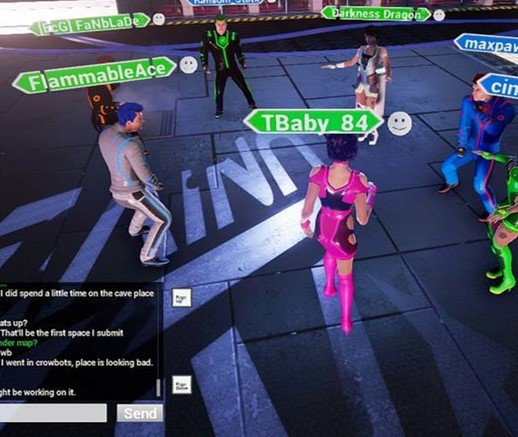How to monetize your audience in a virtual world
This article is intended to explain the steps we took to generate our first $0.5m sales in a virtual world, all from scratch, without owning any brand IP, in a platform that we built ourselves.
Step 1 - Identify clearly who is your community
Like with any product, you need to understand your target audience. When we built our first virtual world, we targeted users who had a clear connection to each other.
Our community was made of fans of video games who were nostalgic of a specific famous beautiful virtual hub on PlayStation called PlayStation Home.
PlayStation Home virtual world
As we were creators of virtual worlds for this platform, when PlayStation decided to shut it down, we created an alternative independent virtual world to keep the adventure going: we decided to build our own. As many people were fans of PlayStation Home, this is how we got our first million of users, in just 12 months. This is faster than Netflix and Twitter when they started!
Before you decide to create your own virtual world for your brand, you need to define clearly who your users are, roughly how many users can you reach: a few tens of thousands? A few million? etc.
In our case, with our first 2m users, we generated 0.5m in sales of digital merchandize. By sharing this with you, we hope this gives you a useful benchmark to start somewhere in defining your assumptions for what is achievable in your own business.
Step 2 - Engage your community
Engaging users does not mean sharing information with them or pushing a product. This should not be a top-down communication, like on a website or in social media posts for example. We want to offer our community the tools to better engage and share.
This includes organizing events, offering beautiful spaces and unique avatar outfits for users to express personality.
Whether you tie it to a calendar event, a promotion, a new service is up to you, but try to plan ahead your contents, because it can take time to create specific avatar outfits, accessories.
Promotion of peace through the appearance of avatars
Sometimes, it is worth adapting an existing virtual space for an event. The only limit is your imagination: you can offer a dream house, a private island, an appartment on Mars…
This is a dreamhouse available for reservation to anyone.
Engagement goes through mini-games: you should create fun casual games to give your users good reasons to come back. It can sound complex but we did many of them quickly. We developped the tools to add them in just a few days.
Here, we created snow in winter and themed mini games such as snow ball fight for example
These contents can relate to the news or to what is happening with your brand. In that sense, it is similar to updating the content of a website, but has to be thought through the lenses of a social place where you genuinely want to hang out and to spend good time with like-minded people. Remember that these are all tools for communication between users, not between you and your audience. The user is the hero.
Step 3 - Tailor the digital goods to your community
Do you know why users want to connect and what is their area of interest? Great, then you can think of which avatar outfits they would like.
For example
Football fans: jerseys of their favorite club
Comics fans: avatars of super heroes would be a perfect start
…
In our case, we created worlds and avatar outfits in the same style as in the virtual universe where our community was used to connect. They could feel at home when they joined our virtual world.
We generated over half a million without having a famous brand or any established user base. If your audience or userbase / fanbase is strong and you don’t have a virtual world for users to engage, maybe you’re missing an opportunity.
We created Atom Stars to help brands and organizations around the world to unlock the potential of virtual worlds with their own audience. If you have any question, feel free to contact us here.






